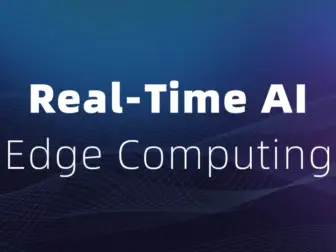Tag - Cloud-Edge Collaboration
Blog, Edge Computing and Data Analytics , March 12, 2025 , AI Applications, Cloud-Edge Collaboration, Data Security, Edge Computing, iot, Machine Learning, Real-Time AI
AI and Machine Learning, Blog , February 19, 2025 , AIoT, Cloud-Edge Collaboration, Data Analysis, embedded development, Healthcare Devices, Industrial IoT, iot, Smart Cities, Smart Homes
Blog, Edge Computing and Data Analytics , September 21, 2024 , Cloud-Edge Collaboration, Deployment Guide, Edge Computing, EdgeController, EdgeCore, iot, KubeEdge, Kubernetes, Open Source Project
Blog, Edge Computing and Data Analytics , September 21, 2024 , Cloud-Edge Collaboration, CNCF, DeviceTwin, Edge Computing, Edge Device Management, EdgeController, IoT Platform, KubeEdge, Kubernetes, Open Source Project
Enhancing Performance and Efficiency Through Cloud-Edge Collaboration
In today’s digital landscape, businesses are constantly looking for ways to improve performance and efficiency. One emerging trend that is gaining popularity is cloud-edge collaboration. This innovative approach involves leveraging the capabilities of both cloud computing and edge computing to drive better results for organizations.
Cloud computing has been a game-changer in the way businesses operate, allowing them to store, manage, and process large amounts of data in the cloud. This technology offers scalability, flexibility, and cost savings, making it an attractive option for many organizations. However, there are limitations to cloud computing, particularly in situations where real-time data processing is required or latency issues need to be minimized.
Enter edge computing, a technology that brings computing resources closer to where data is generated. By processing data locally at the edge of the network, organizations can reduce latency, improve response times, and lower bandwidth usage. Edge computing is particularly useful in scenarios where data needs to be processed quickly, such as in autonomous vehicles, smart factories, or IoT devices.
By combining the strengths of cloud computing and edge computing, organizations can create a powerful synergy that drives better performance and efficiency. This cloud-edge collaboration allows companies to leverage the scalability and cost-effectiveness of the cloud, while also benefiting from the speed and real-time processing capabilities of edge computing.
One of the key benefits of cloud-edge collaboration is improved performance. By offloading processing tasks to edge devices, organizations can reduce latency and improve response times, leading to a better user experience. This is particularly important in applications such as video streaming, online gaming, or real-time analytics, where even small delays can have a significant impact on performance.
Another advantage of cloud-edge collaboration is increased efficiency. By processing data at the edge of the network, organizations can reduce the amount of data that needs to be sent to the cloud, saving on bandwidth costs and reducing network congestion. This can be especially beneficial in scenarios where large amounts of data are generated, such as in smart cities, industrial IoT, or healthcare applications.
Furthermore, cloud-edge collaboration offers enhanced security and privacy. By keeping sensitive data local and processing it at the edge, organizations can reduce the risk of data breaches and unauthorized access. This can be crucial for industries that handle sensitive information, such as healthcare, finance, or government.
In conclusion, cloud-edge collaboration is a powerful approach that can help organizations enhance performance, improve efficiency, and enhance security. By leveraging the strengths of both cloud computing and edge computing, businesses can create a more resilient and agile infrastructure that drives better results. As digital transformation continues to accelerate, cloud-edge collaboration will play an increasingly important role in shaping the future of technology.



